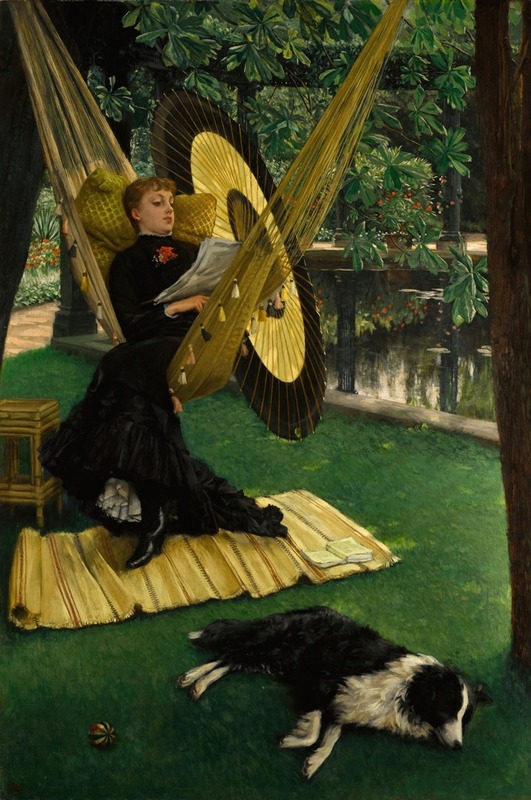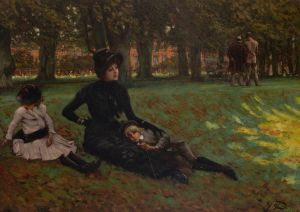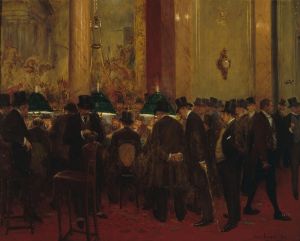
The Hammock
A hand-painted replica of James Tissot’s masterpiece The Hammock, meticulously crafted by professional artists to capture the true essence of the original. Each piece is created with museum-quality canvas and rare mineral pigments, carefully painted by experienced artists with delicate brushstrokes and rich, layered colors to perfectly recreate the texture of the original artwork. Unlike machine-printed reproductions, this hand-painted version brings the painting to life, infused with the artist’s emotions and skill in every stroke. Whether for personal collection or home decoration, it instantly elevates the artistic atmosphere of any space.
James Tissot's painting "The Hammock" is a notable work from the late 19th century, reflecting the artist's keen interest in capturing the nuances of modern life and fashion. Tissot, a French painter and illustrator, was renowned for his detailed and often intimate portrayals of contemporary society, particularly focusing on the leisure activities and domestic scenes of the upper middle class.
"The Hammock," completed in 1879, is a fine example of Tissot's ability to blend realism with a sense of narrative. The painting depicts a serene outdoor scene, where a woman is leisurely reclining in a hammock. This setting is typical of Tissot's work during this period, as he often chose to depict moments of relaxation and contemplation, providing a glimpse into the private lives of his subjects.
The composition of "The Hammock" is carefully constructed to draw the viewer's attention to the central figure. The woman in the hammock is elegantly dressed, showcasing the fashion of the time, which was a recurring theme in Tissot's paintings. Her attire, along with the lush greenery surrounding her, suggests a sense of opulence and tranquility. The use of light and shadow in the painting enhances the peaceful atmosphere, with dappled sunlight filtering through the leaves, creating a play of light on the woman's dress and the hammock.
Tissot's technique in "The Hammock" is characterized by his meticulous attention to detail and his ability to capture textures and patterns with precision. This attention to detail is evident in the rendering of the woman's clothing, the intricate weave of the hammock, and the foliage that frames the scene. The artist's use of color is subtle yet effective, with a palette that emphasizes the natural setting and the elegance of the subject.
During the time "The Hammock" was painted, Tissot was living in London, having moved there in 1871 following the Franco-Prussian War. His work during this period often reflected the influence of British society and culture, and he became well-acquainted with the social circles of the time. Tissot's paintings from his London years, including "The Hammock," are noted for their depiction of the leisurely pursuits of the wealthy, often set in idyllic garden settings or elegant interiors.
"The Hammock" is part of a series of works by Tissot that explore themes of leisure and the private lives of women, a subject that fascinated him throughout his career. This painting, like many of his others, offers insight into the social dynamics and cultural norms of the late 19th century, capturing a moment of quiet repose that is both personal and universal.
Today, James Tissot's "The Hammock" is appreciated for its artistic merit and its ability to convey the subtleties of human experience. It remains a testament to Tissot's skill as a painter and his keen observation of the world around him.


















